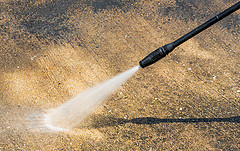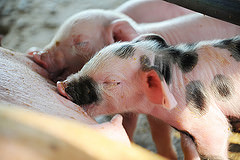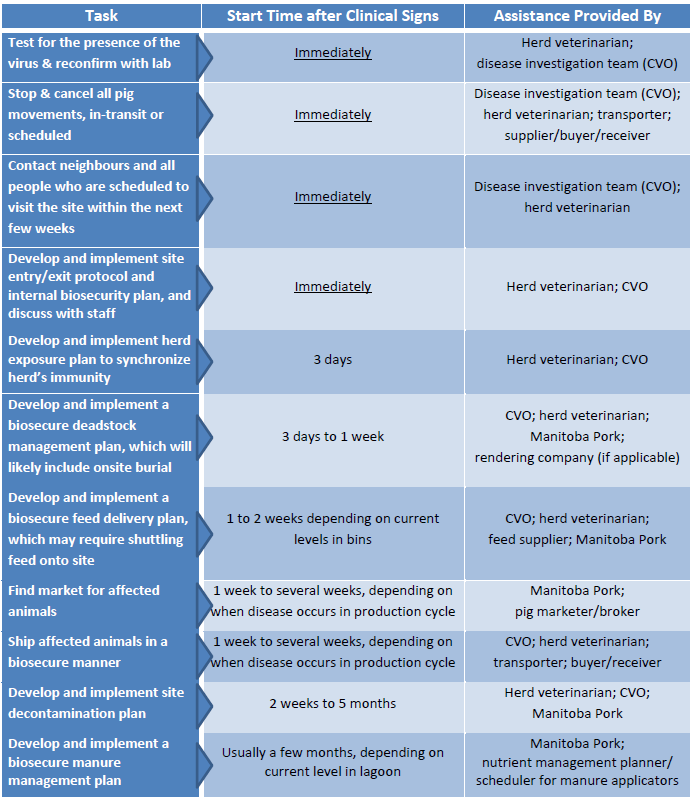



A Guide to Managing PEDv on Your Pig Farm
ANALYSIS - PEDv is a highly contagious virus affecting piglets. As PEDv continues its spread through the US and Canada, strict biosecurity and quick response is needed to prevent the spread and minimise losses, writes Lucy Towers, ThePigSite.com Editor.Strict biosecurity and effective biocontainment has so far helped Canada to limit the spread of PEDv and therefore should continue to be taken seriously.
Speaking to ThePigSite, Mark Fynn, Animal Care Specialist at Manitoba Pork Council, said that an early focus on farm and transport biosecurity has prevented the virus from taking hold.
"Biosecurity definitely played a key role in preventing the spread of PEDv in Canada. Early on, we focused primarily on farm gate biosecurity and transport biosecurity, and then extended it to a more regional approach including wash facilities, service people, gathering yards and abattoirs," commented Mr Fynn.
Mr Fynn noted that the country's success in controlling the virus has also been down to help from the government, which allowed for surveillance testing at abattoirs and gathering yards.
This testing has allowed for early detection, trace-outs to farms and therefore, a rapid response.
If caught early then strict biocontainment of sites can be applied and work can be done to help farmers stabilize their herd and eradicate the virus.
Keeping PEDv Off Your Farm 
There are a number of things that farmers must do to prevent PED from entering their farms.
Firstly, any live pigs coming onto the farm need to be free from the virus and the vehicle carrying them should have been cleaned, washed, disinfected and dried (CWDD) before picking them up and before entering your farm, explained Mr Fynn.
Pigs need to be loaded in a unidirectional flow and, as an extra precaution, drivers must stay on the transporter and farmers must stay off it.
The next most critical thing is preventing any outside organic material (e.g. manure, dirt, soil) from being brought onto the farm yard or into the barns.
When pigs arrive at your farm, having a Danish style entry barrier into the barns, including a walk-through shower, is also critical, said Mr Fynn.
When it is absolutely necessary for people to be on the farm and in the pig barns, their regular clothes and footwear should be left on the outer side of the barrier and special disinfected clothing for the barn should be put on in a transition area before stepping into the inner barn area.
Finally, farmers should also check with their feed suppliers that their feed (especially if feed containing animal-based products) is free from contamination, continued Mr Fynn.
If a neighbouring farm gets PED then it is best not to go onto the farm. You should also stay clear of their main roadway, where they spread or store manure and also becareful not to share equipment.
However, it is of high importance that you remain in contact with the effected farmer, offering emotional support. Do not shun them, said Mr Fynn. "You can still talk with them in the grocery store or sit beside them in church. The virus does not have legs; we have to walk it into the barn."
Signs of PEDv 
Despite excellent biosecurity, PEDv may still enter your farm. It is therefore good practice to know what to expect if PEDv hits your farm.
Mr Fynn commented that most farmers will 'just know' when PEDv arrives. It is characterised by pigs having watery diarrhea and some vomiting. Pigs will also be quite lethargic.
In farrowing operations, farmers will start losing most of their newborn piglets within a few days and this might last for three to six weeks.
Dealing with PEDv
In order to help pig farms deal with PEDv on their farms effectively, Manitoba Pork has developed a 11-step guide instructing what action must be taken, how quickly and who to contact for assistance at each stage.
It is also very important that farms with PED act quickly, said Mr Fynn as PED can take hold and spread very quickly.
"The virus has a low infectious dose, which means it takes very little of it to make pigs sick. Pigs become sick within 24 hours of coming into contact with it and infected pigs shed millions of copies of this virus in every milliliter of manure," explained Mr Fynn.
"The quicker farmers get on top of it, the better the chance they have of biocontaining it to their site and eventually eradicating it.
"There are numerous tasks that farmers will need to do in the first 72 hours (see below), including contacting their veterinarian and halting movements of pigs, non-essential people and vehicles on and off the site. Also, making sure the entire herd is synchronized with its exposure to the virus ends up being critical to stabilizing the herd and eradicating the virus," Mr Fynn continued.









